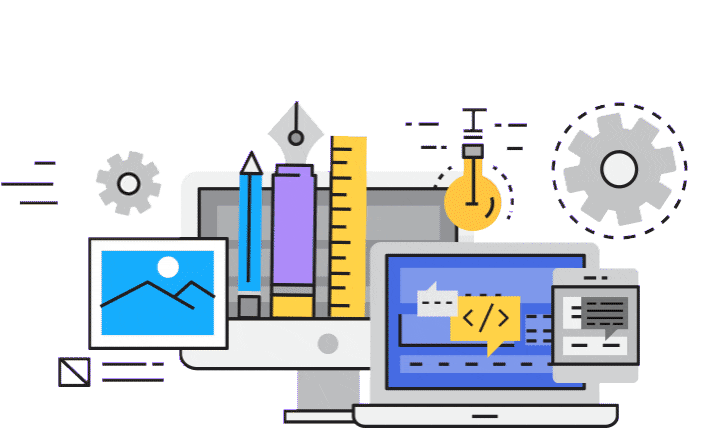The Real Cost of Hiring a Website Development Company (and Why It’s Worth It)

Introduction
Price is often the first thing on a business owner’s mind when considering a website development company. It’s a valid concern—web development can represent a significant investment. However, focusing solely on the upfront cost can be shortsighted. A well-developed website has the potential to become a revenue-generating machine and an integral part of your brand identity.
This article aims to break down the true cost of professional web development company while illustrating why that investment is frequently a wise decision for businesses of all sizes.
The Components of Web Development Costs
- Discovery and Planning
- Market Research: Understanding target demographics, competitive landscapes, and marketing channels.
- Wireframing and Prototyping: Visualizing site structure and functionalities before coding starts.
- Design
- UI/UX: Crafting layouts, navigation menus, and interactive elements.
- Branding Elements: Custom graphics, color schemes, and typography.
- Coding and Implementation
- Front-End Development: HTML, CSS, JavaScript for site styling and interactive features.
- Back-End Development: Server-side logic, databases, and user authentication systems.
- Testing and QA
- Browser Compatibility: Ensuring smooth performance across Chrome, Firefox, Safari, and Edge.
- Device Responsiveness: Checking layout and features on smartphones, tablets, and desktops.
- Deployment and Hosting
- Server Setup: Configuring hosting environments for optimal speed and security.
- Domain and SSL Certificate: Registration costs and annual renewals.
- Maintenance and Updates
- Security Patches: Regularly updating software to protect against vulnerabilities.
- Feature Upgrades: Adding new functionalities based on evolving user needs.
Typical Pricing Models
- Fixed Price:
Ideal for well-defined projects. You pay a set amount for the entire scope of work. - Hourly Rate:
Best for projects with changing requirements. You pay for the actual development hours logged. - Retainer:
Ongoing monthly fees for continuous support, design changes, or feature additions.
Key Factors Influencing Cost
- Project Complexity: A simple one-page site costs far less than a comprehensive eCommerce platform with custom integrations.
- Level of Customization: Tailor-made designs and functionalities require more time and specialized skills, thus increasing the cost.
- Experience and Reputation: Established agencies with extensive portfolios and market credibility charge higher rates, but they often deliver superior quality.
- Technology Stack: Cutting-edge frameworks or specialized software licenses can add to the final bill.
Hidden Costs to Consider
- Content Creation: Professional copywriting, photography, or videography can be additional line items.
- SEO and Marketing: Building an optimized site might require keyword research, link-building, and ongoing campaigns.
- Training and Handovers: Your team may need tutorials or documentation for managing site content after launch.
- Revisions and Scope Creep: Extra features or last-minute changes can inflate costs if not accounted for in the original agreement.
The Long-Term Value Proposition
- Enhanced Brand Reputation: A well-built website projects professionalism, instilling trust in potential customers.
- Improved Conversion Rates: Streamlined user journeys, fast load times, and compelling CTAs can significantly boost sales and lead generation.
- SEO Advantages: Proper site architecture and clean coding can improve search rankings, driving organic traffic for years to come.
- Adaptability: A flexible, scalable infrastructure allows you to pivot quickly and add new features as your business evolves.
Calculating ROI
Return on Investment (ROI) goes beyond direct sales:
- Lead Generation: A site that consistently attracts quality leads pays for itself over time.
- Operational Efficiency: Features like chatbots and automated forms reduce manual tasks, cutting operational costs.
- Long-Term Usage: A robust website can remain effective for several years with minimal updates.
Budgeting Tips
- Start with a Minimum Viable Product (MVP): Focus on essential features to control initial costs, then iterate based on user feedback.
- Negotiate Maintenance Bundles: Some website development companies offer reduced rates for bundling development with post-launch support.
- Plan for Scalability: Invest in a strong foundation so you won’t have to rebuild your site from scratch as your business grows.
- Request Multiple Quotes: Comparing proposals can help you identify reasonable price ranges and potential red flags.
Why It’s Worth the Investment
- Professional Edge: Templates and DIY solutions often can’t match the polish and functionality delivered by expert developers.
- Future-Proofing: Skilled developers build with flexibility in mind, ensuring that updates and integrations are easier down the road.
- Peace of Mind: With a professional team overseeing your site, you can focus on strategy, content, and customer relationships rather than technical hassles.
Conclusion
While the cost of hiring a website development company can seem high at first, it’s important to view it as a strategic investment rather than an expense. The financial outlay often translates into a platform that drives growth, amplifies brand authority, and scales alongside your business. By understanding the various cost components and the long-term value, you can make an informed decision that sets your brand up for sustained online success.
Ready to supercharge your business?
Ask about Yoora products, pricing, implementation, or anything else. Our highly trained reps are standing by, ready to help.
Full access. No credit card required.

